Rob Britton: Burning Matches at Seven Serpents
Finding his way, testing his limits
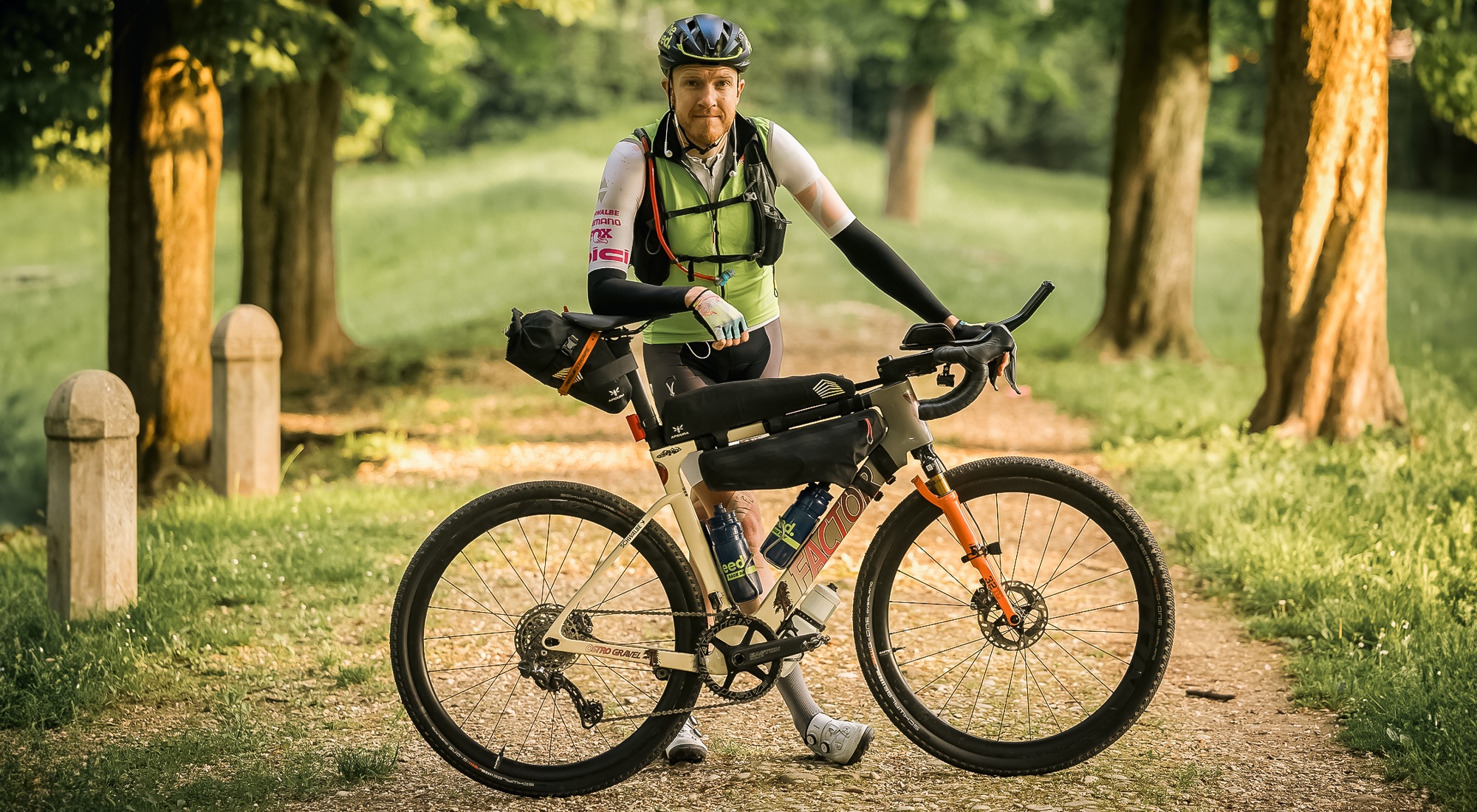
Most of us, when we go for bike rides in beautiful parts of the world, want to be able to remember the rides afterwards. Rob Britton is no different, except for the fact that when he undertakes one of the many ultra-endurance races around the world, he does so knowing that it’s likely long chunks of the 50+ hours of non-stop racing will largely be blanks in his memory.
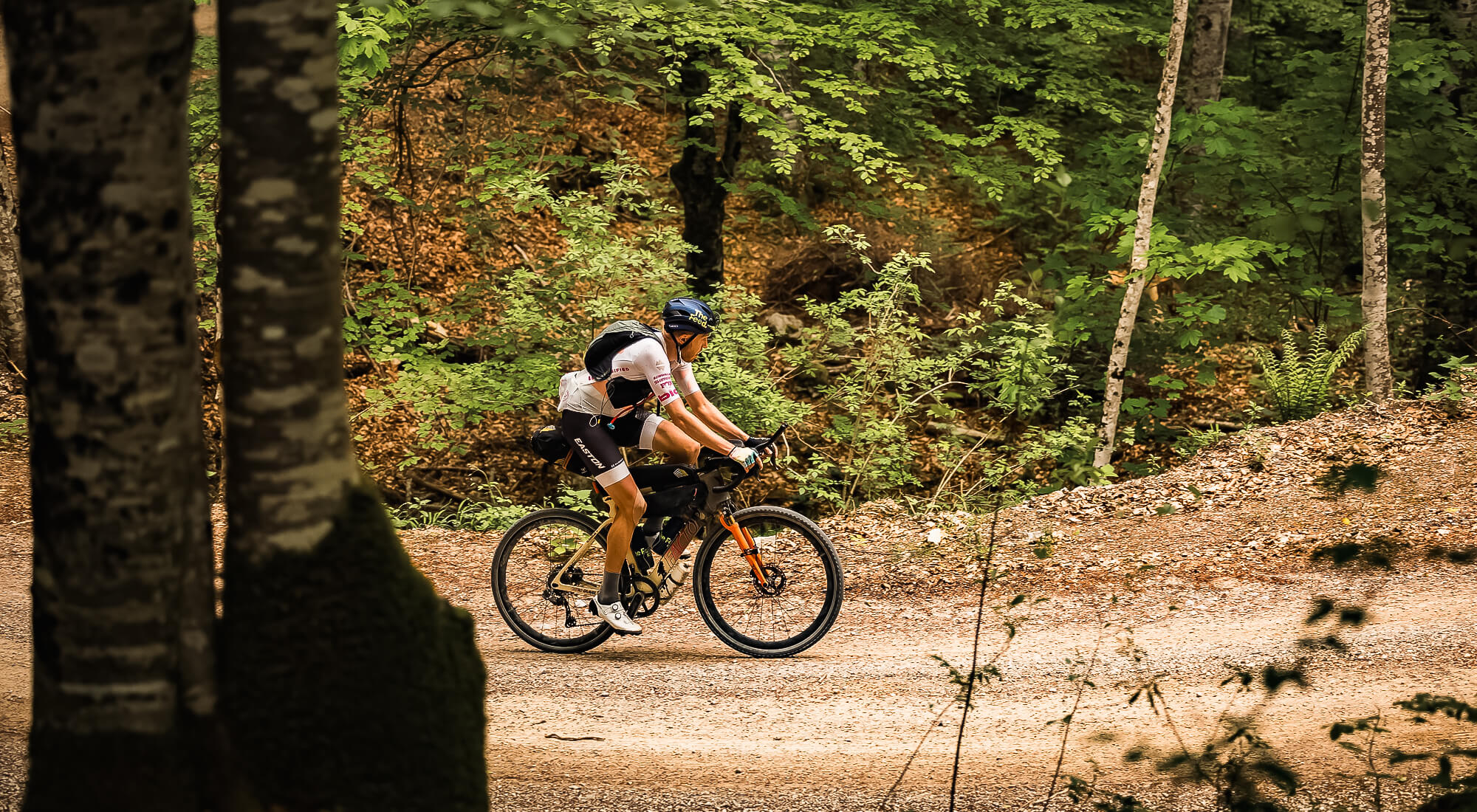
“In these long races you can take time to stop to take pictures, unlike a UCI road race, but it’s the sleep deprivation that gets you. You just sort of lose memories. It’s almost like a night of bad drinking with these times of blackouts,” Rob explained after winning the Seven Serpents unsupported ultra-gravel race this past May, which took him from Ljubljana, Slovenia, through Croatia and then finishing in Trieste, Italy.
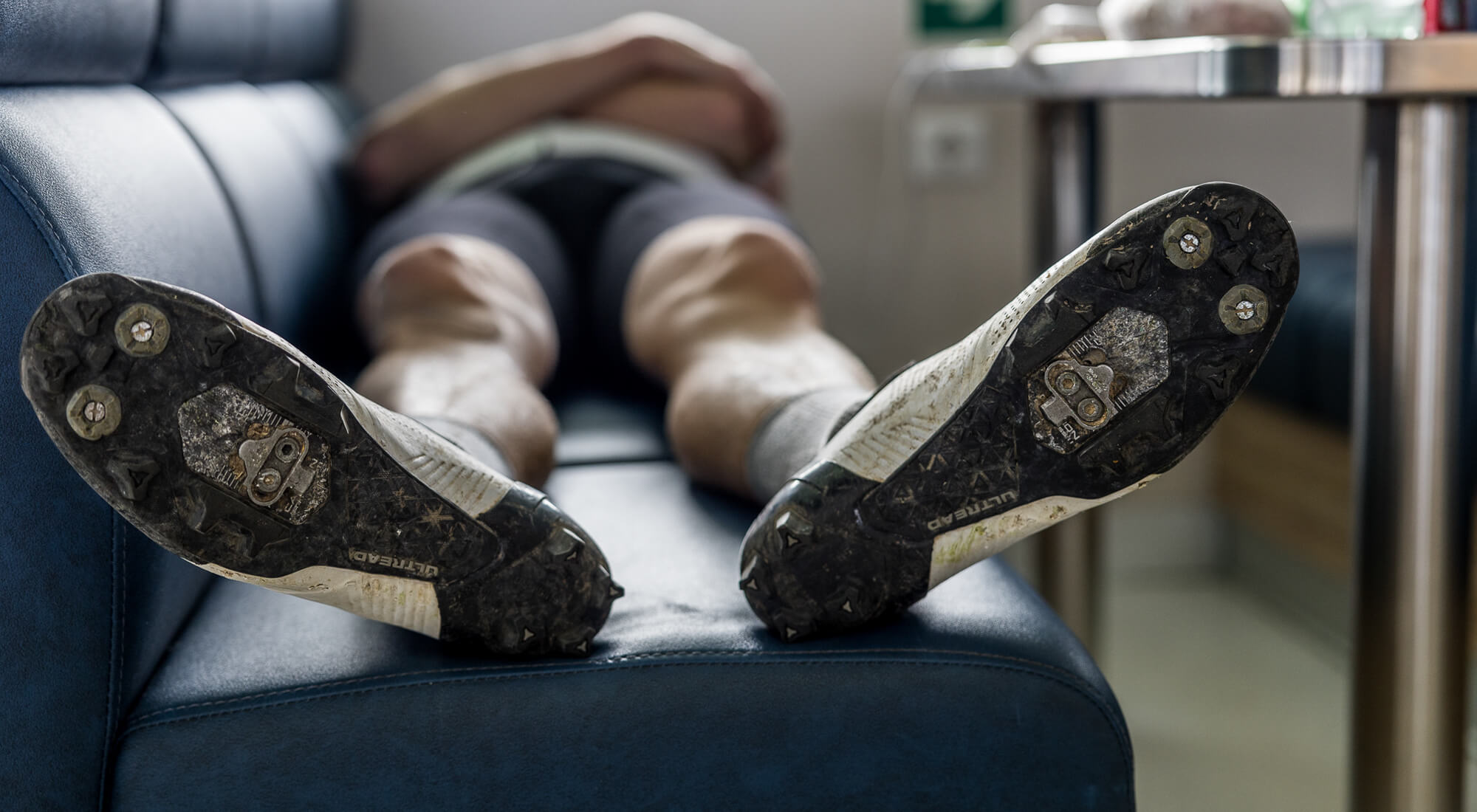
Photo credit: Stirl and Rae Media Haus
Rob needed just 53 hours to ride (and hike) his bike 839 kilometers with approximately 17,000 meters of climbing. The insanity of just how fast that is crystalizes when we recognize that the next-best placed rider finished over 12 hours later.
Captured on film
It’s a good thing Rob had his usual film team led by Matt Clark from Stirl and Rae Media Haus following his adventure; otherwise he might not have been able to remember much more than the finish. “No, those memories are just gone. Even watching the videos, it’s like you are watching someone else's video, I’m like, ‘That looks pretty cool to do.’ Oh wait, that’s me!” he said.
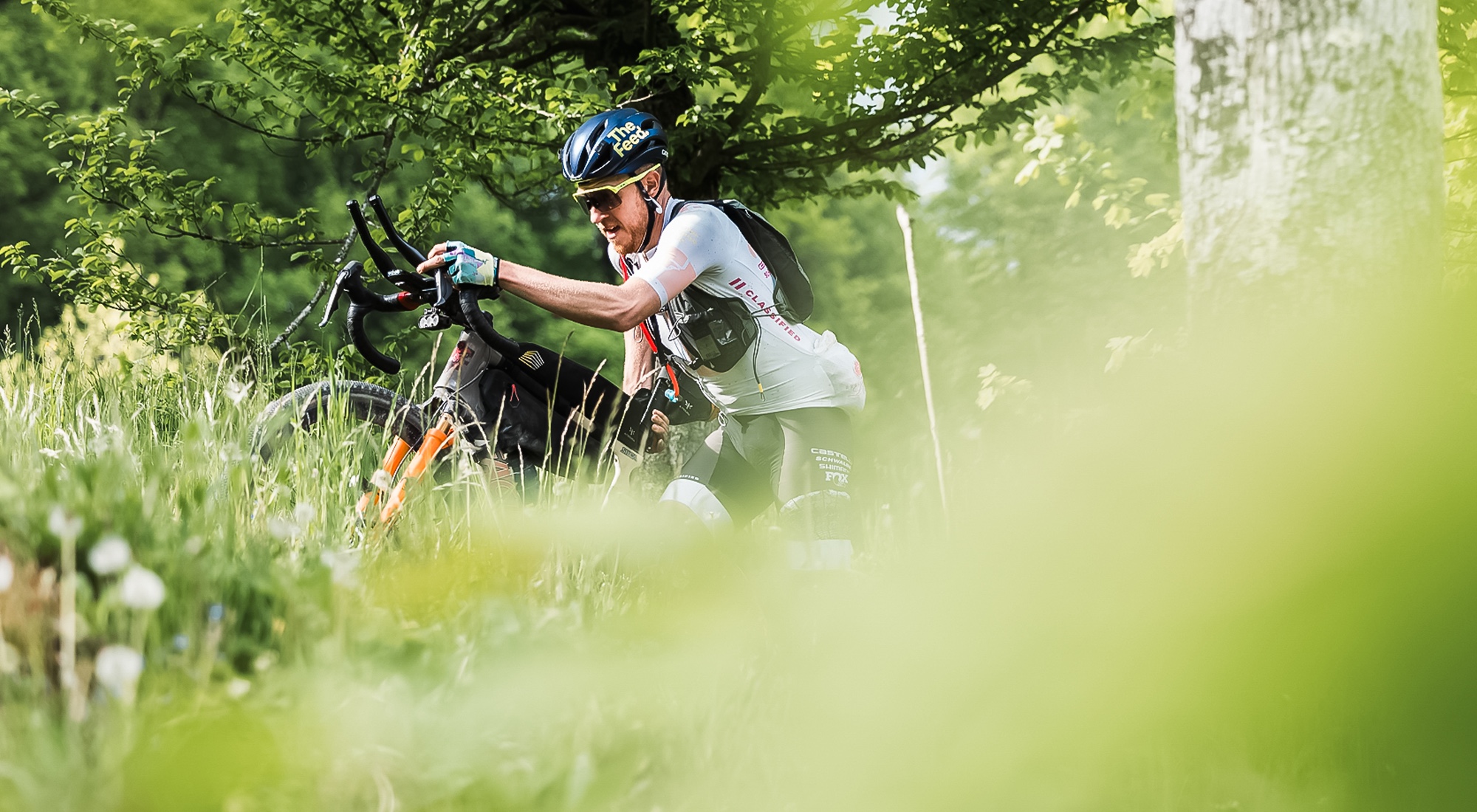
“It’s [seriously] now, just these little snapshots in my head. Maybe if there’s a video and a photo close enough together, then my brain can bridge the gap between the two, and I can piece that time together. But especially on the first day of Seven Serpents, there are so many gaps. Which is weird because you’d think I’d be more cognizant earlier in the race, but maybe it’s gone because the deeper into the race, the less I remember from the past.”
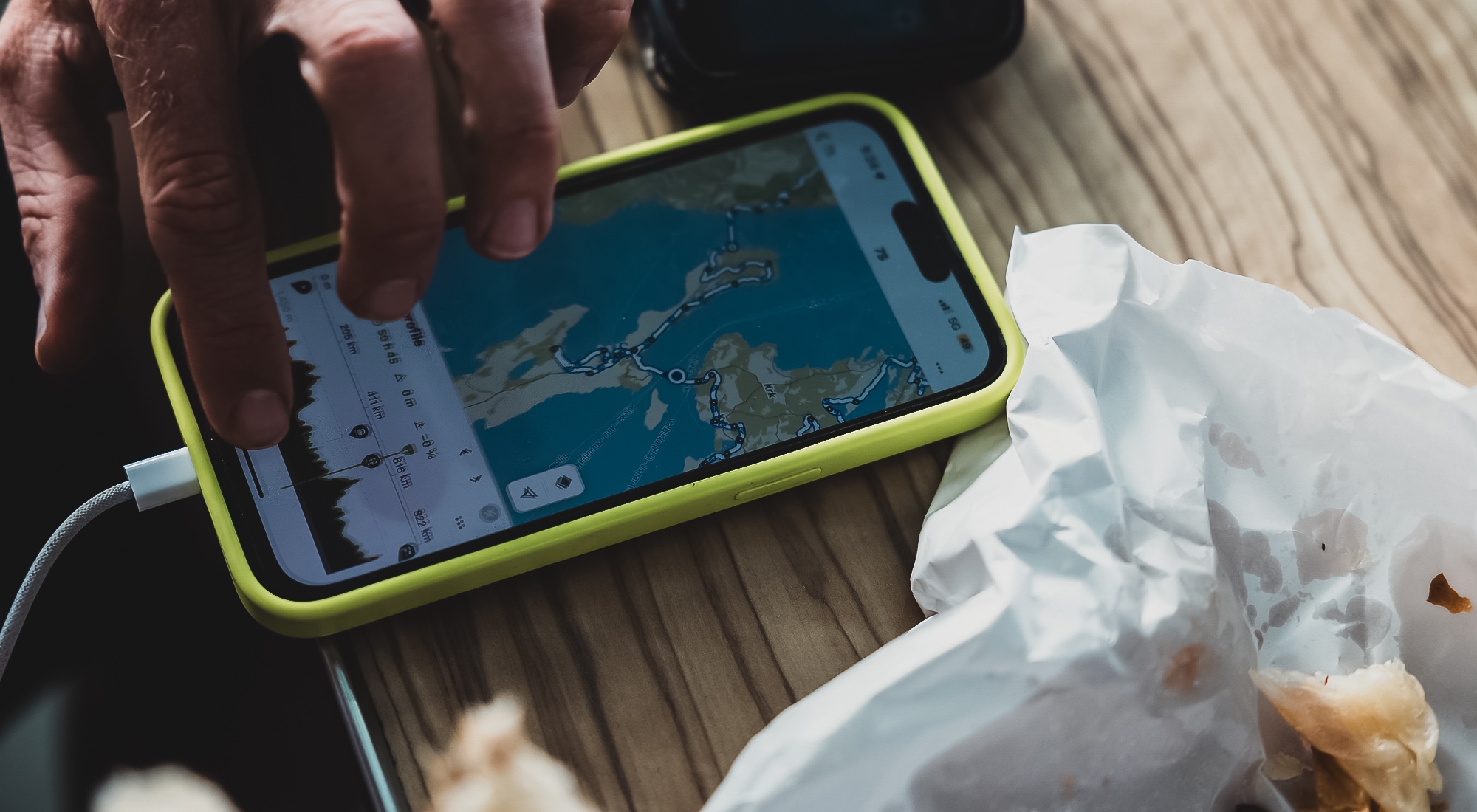
Considering the Seven Serpents takes place in one of the most beautiful corners of the world amplifies what a shame it is to lose these memories, which is compounded by the fact that Rob, and many of the competitors, ride through the dark of night. “I know when I’m riding these races, you think ‘Jeez, I must be missing some pretty spectacular views and things, since it’s so dark.’ You just don’t know,” Rob said.
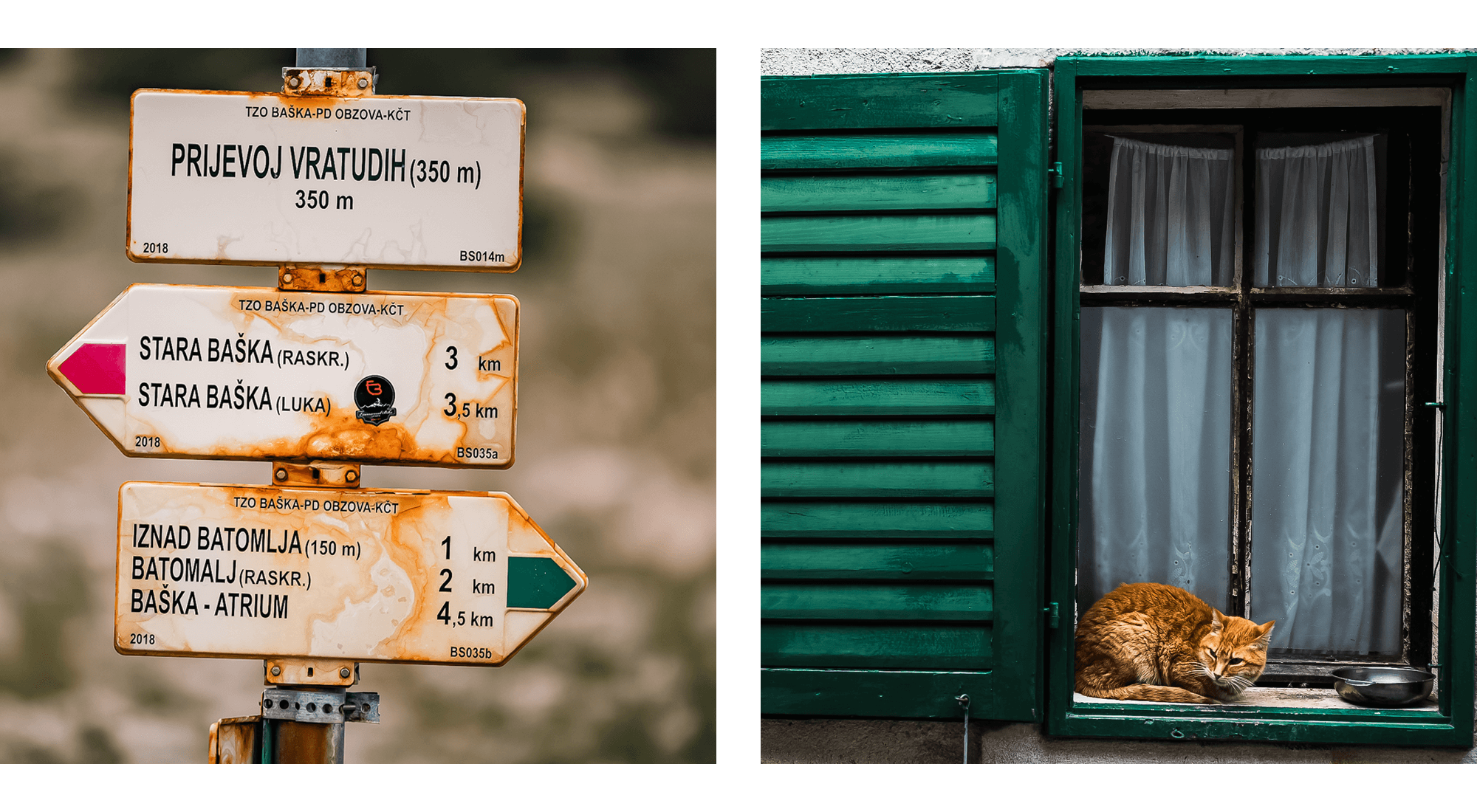
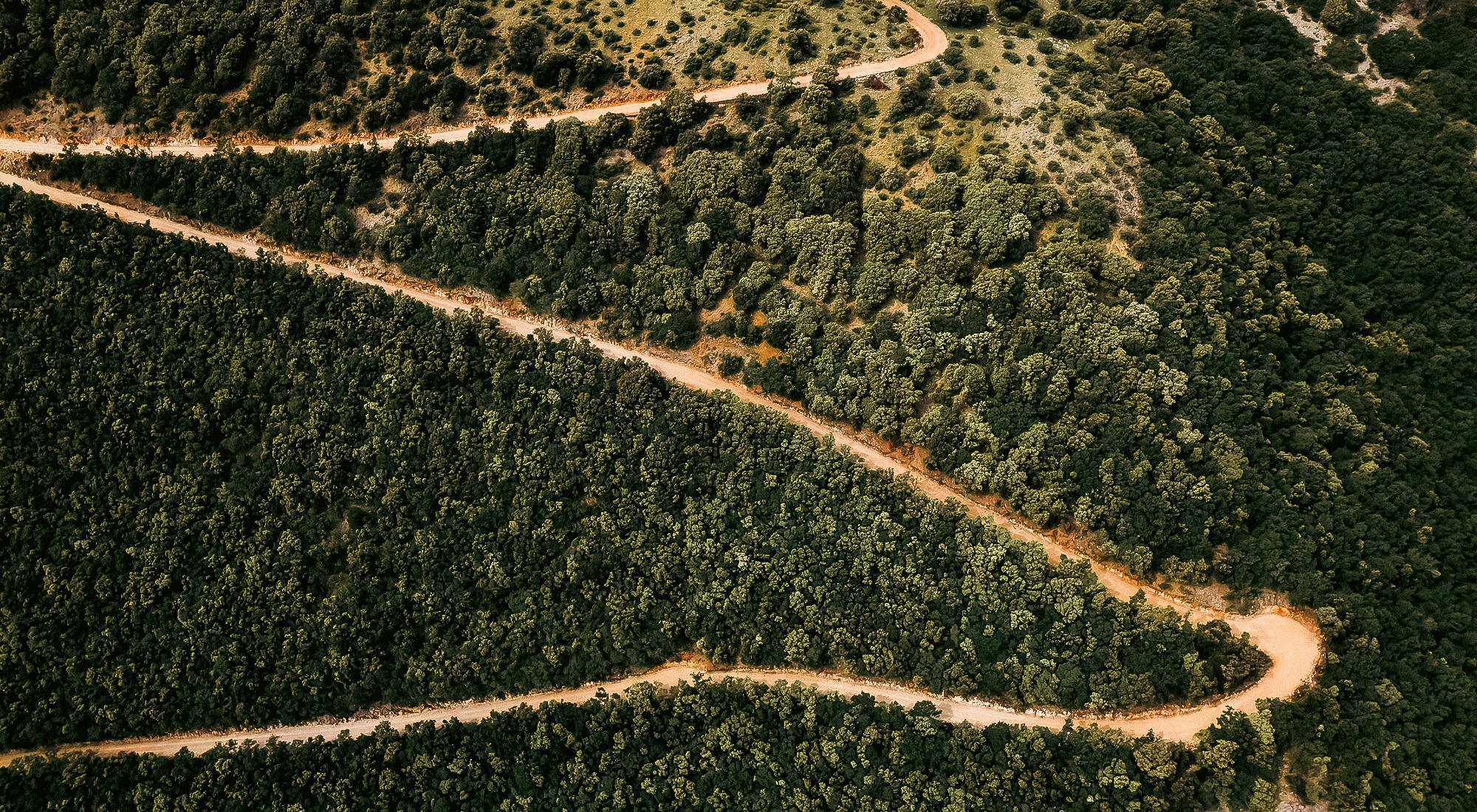
“My wife and I went back specifically to Slovenia and Trieste this autumn for holiday because I think it is so beautiful and I wanted to see more of it, which I think is a big point of these events; I wanted to have a racing career where I see more than just a start and finish line.”
A committed film crew
Thankfully Rob’s frequent collaborator Matt followed his Seven Serpents progress. Seven Serpents provides a “set route”, which means it is an ultra-bikepacking gravel race that has a precisely defined route that all participants must take. That’s in contrast to other ultra-endurance races like the Transcontinental that allow the athletes to follow their own routes, provided they hit certain required checkpoints. Having a pre-established route should, in theory, make it easy for rider and film crew to converge multiple times throughout the event.
Of course, these races frequently do not go according to plan, even for a couple of pros like Rob and Matt. “The course is super set. It’s wild because you’ll be riding, and your GPS will be taking you off into what looks like just a hole in the bush. And you just wonder WTF? It looks like a goat path, and I just wonder how they even found that to make it part of the race,”
Rob explained. “But it’s very set, you’re definitely not choosing your route, it’s more like orienteering. Or really just Google-mapping. You plug it into your computer, and then it tells you, like, ‘in 200 m turn left, in 500 m turn right, continue up this 20% grade for 20 km, try not to cry.’”
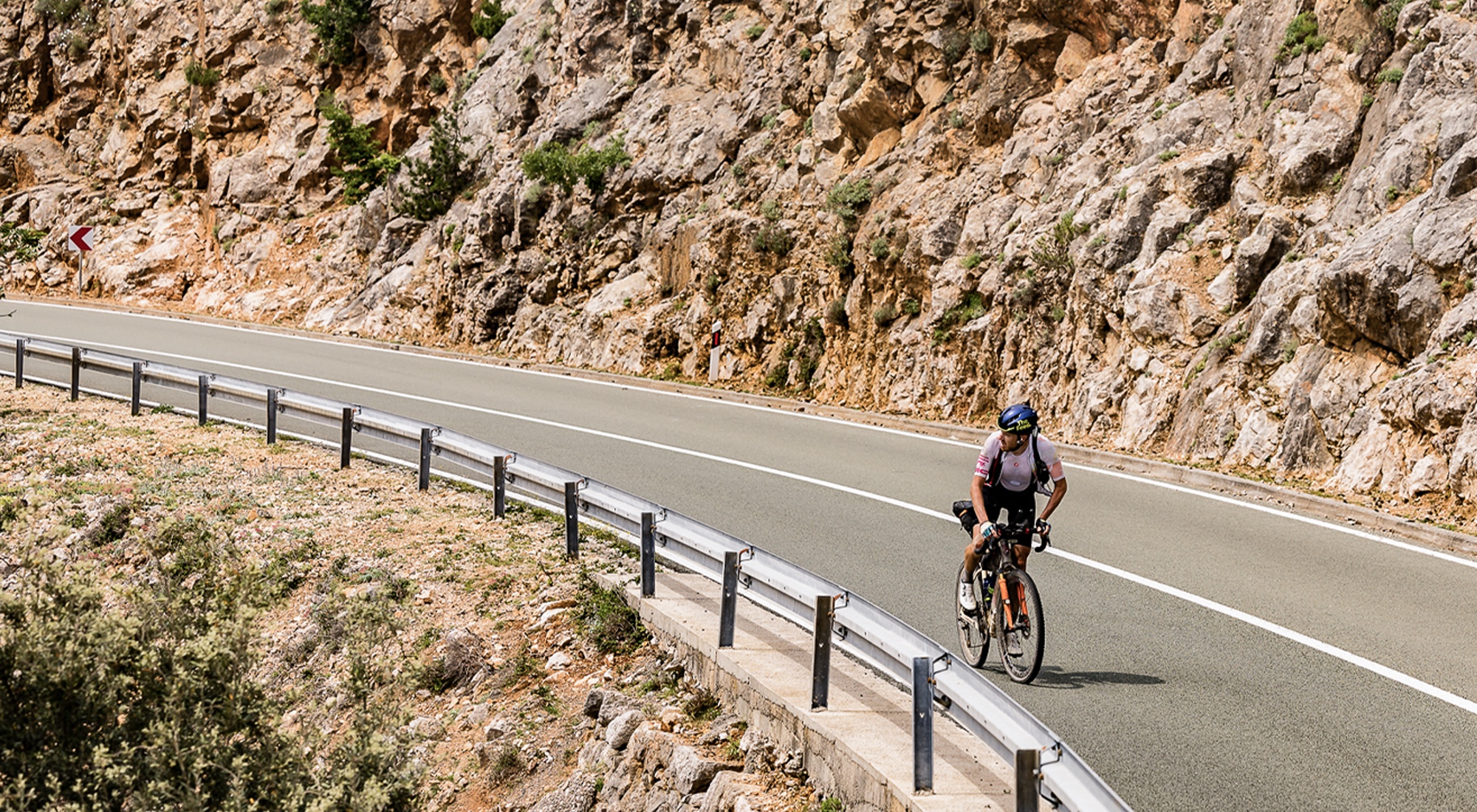
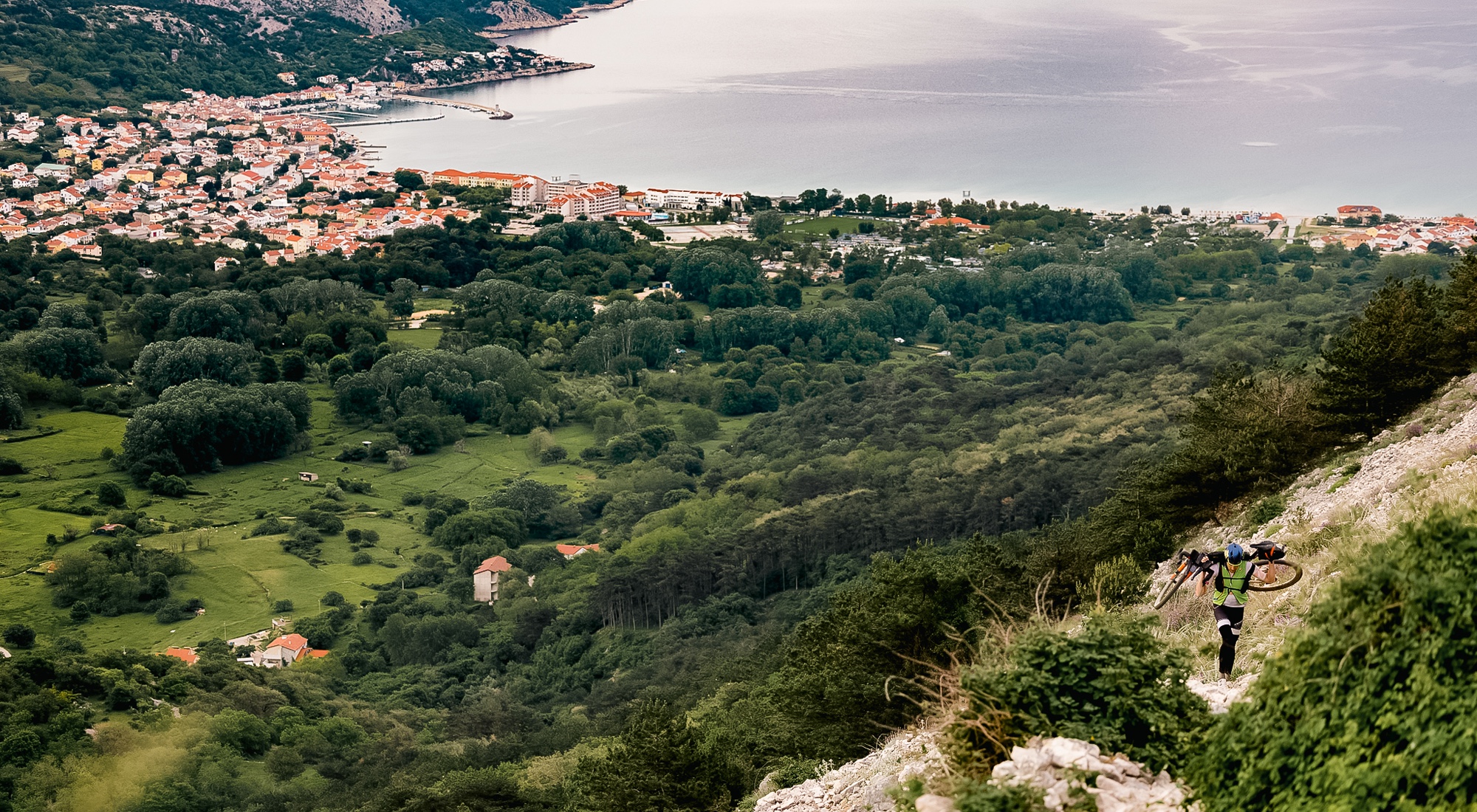
One would think that following these routes using a car might be much easier. Afterall, you at least don’t have to ride your bike. But getting the fantastic images that fill Rob’s Burning Matches Seven Serpents video is a complicated, even herculean task. “The biggest thing is that on a bike you go from point A to point B over this ridge line. You can go over the mountain. But in a car, you have to go around the mountain sometimes. The difference is, it might take me one-and-a-half hours to get over it, but it takes them three hours to go around. Especially if they get stuck in traffic or something.”
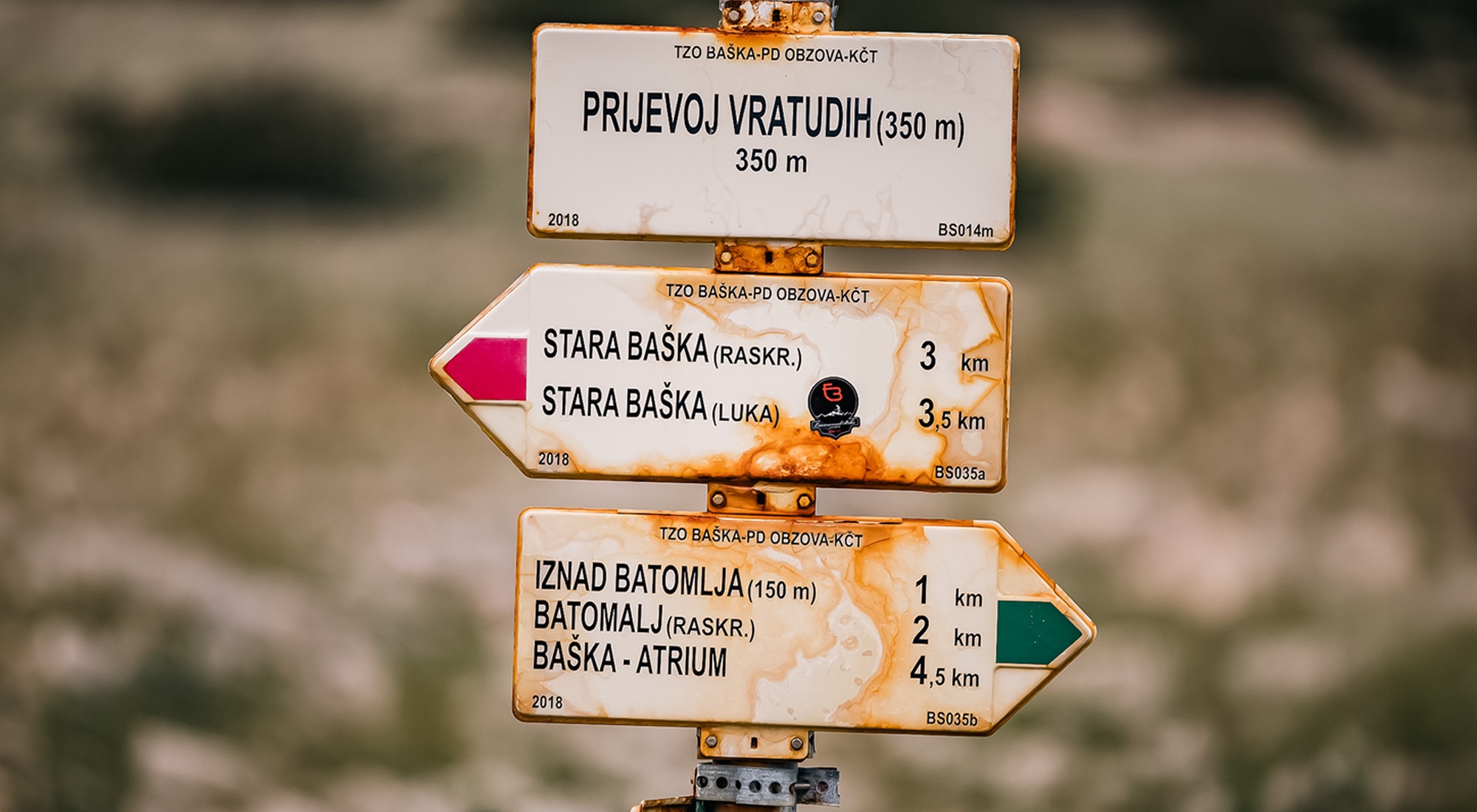
Photo credit: Stirl and Rae Media Haus
Getting that perfect shot
Since Rob and Matt have worked together on previous ultra-events, they both have a pretty good eye for route points that will make spectacular shots. They don’t always know beforehand just how hard it will be to get these images, though.
“I’m pretty good when there’s a set thing, some shot that we really want to get. Early on day two, I was hiking over a mountain, and it was literally in the golden hour, 6 am, bike on my shoulder, just schlepping up to the top of this mountain, and he’s got the camera, shooting stills, video, it was awesome,” Rob said. “I had hiked up one side, and I was just wondering where Matt, and his buddy who was helping, had parked. Well, they had parked at the bottom and carried 60 pounds worth of filming equipment all the way up there in time to catch me and this moment!”
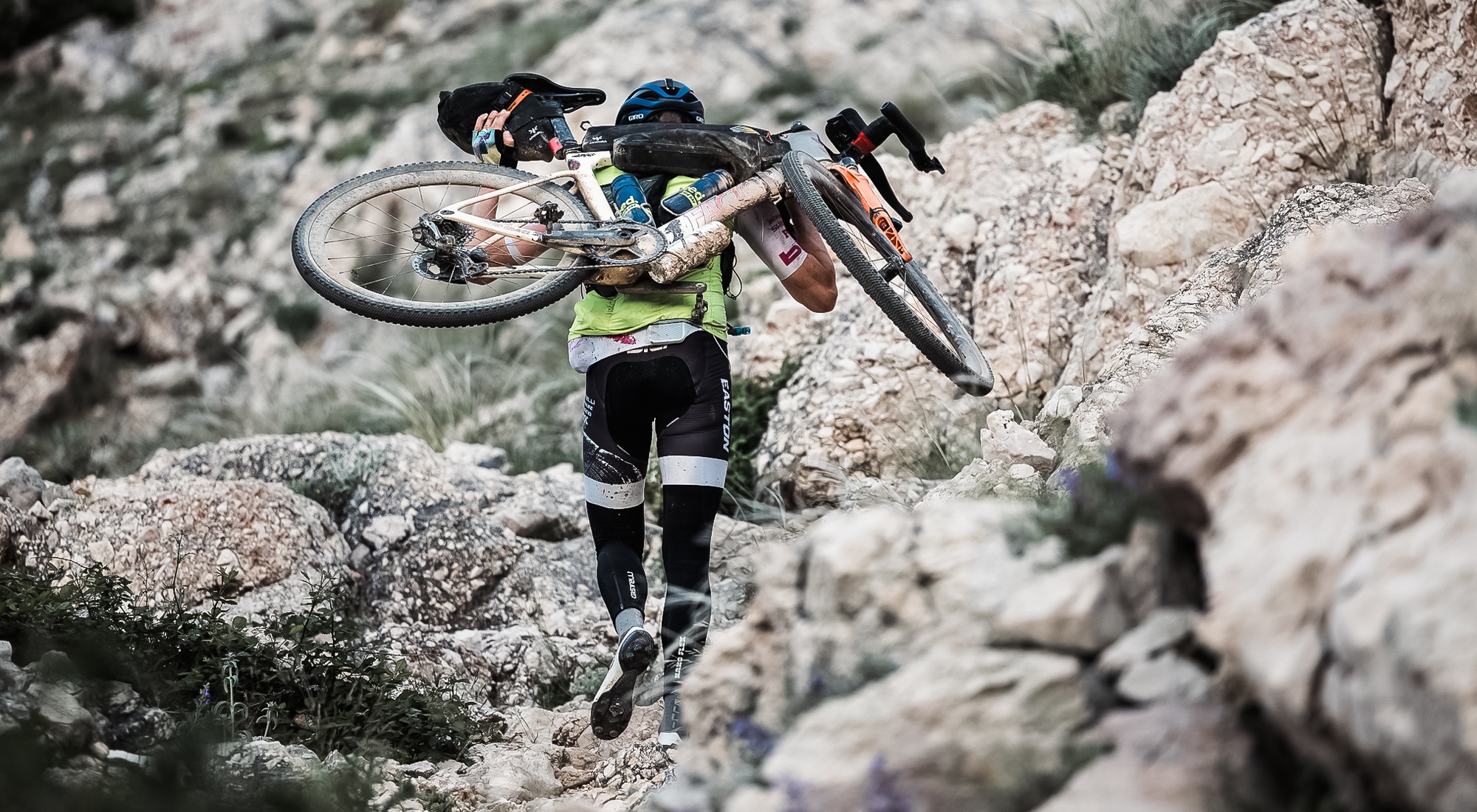
Photo credit: Stirl and Rae Media Haus
Don’t miss the boat
One of the primary features and obstacles of the Seven Serpents’ course for 2024 was the fact that it took the riders across some of the most insanely beautiful Croatian islands. That necessitated using ferry boats, the catching or missing of which could save or cost hours. Not just for the riders, but for any following film crew. Something that Matt nearly found out the hard way after capturing the “Golden Hour” sunrise with Rob at the start of day two.
“Matt and his buddy had to run back down the mountain with all the equipment to the car, drive back around to get to the ferry in time,” Rob explained. “I only had 70 km to get to the ferry, which took maybe just two hours and some change because it was downhill and flat the whole time. I actually got to the ferry 20 minutes before Matt and then the ferry left maybe 10 minutes after he got there. So, there are these hard lines that you just had to make, and I was like, well, if he’s not there, I guess I just keep going.”
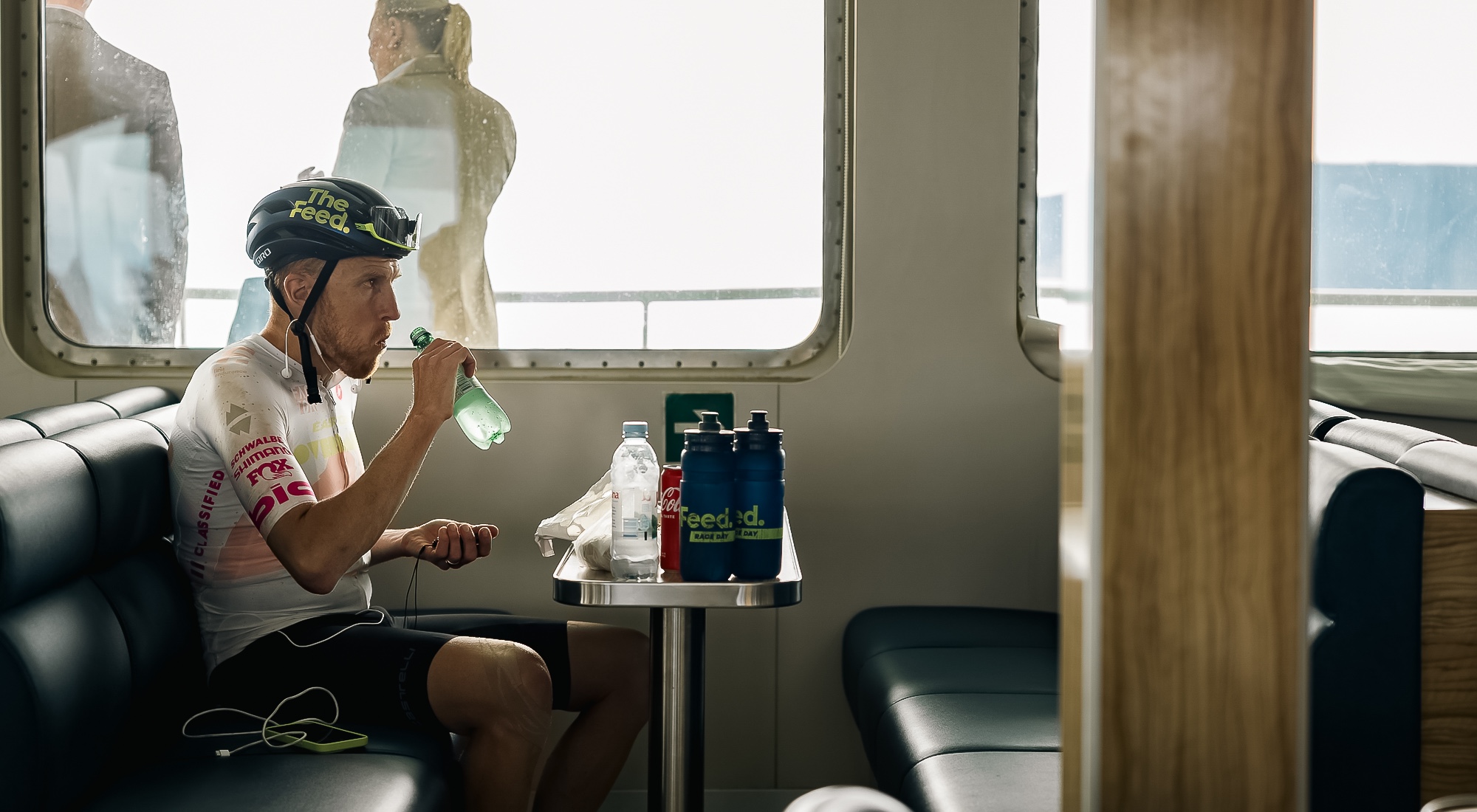
Rob’s efficiency at making ferry boats comes from a lifetime of riding on and off Vancouver Island where he grew up and still lives. It’s an advantage that would prove useful during the Seven Serpents, extending his already impressive lead after more than 24-hours of racing.
Still no cakewalk
Even if Rob and his film crew have their game dialed, and Rob won by over half a day, the Seven Serpents was far from just a pleasant ride in beautiful surroundings. “We’ve definitely had issues. Sometimes the dot trackers seem to be delayed, or you might not even have phone service, so the tracker is useless. There can be a bunch of issues; it’s not quite as straightforward as you’d think it’d be,” Rob said. “I’m notoriously bad at estimating. I’ll be like, yeah, there’s no way I’m doing more than 22km/h for that part, and then we can calculate how long it’ll take me to get somewhere, but then instead of 22km/h I’m doing closer to 28km/h. I’ll just ride way faster than expected, and the camera crew will say we just didn’t have time to set up, you were there too early. It's difficult from a logistical point of view.”
Sometimes pilot error causes issues. It’s hardly surprising that one’s brain might not be functioning very sharply after double-digit hours in the saddle. “Funny story, the first night when it was just starting to rain a little bit, there was a checkpoint at the top of a pretty difficult climb. It was loose gravel, 7-8km long. It went up to an observation tower type of thing; a concrete structure,” Rob said.
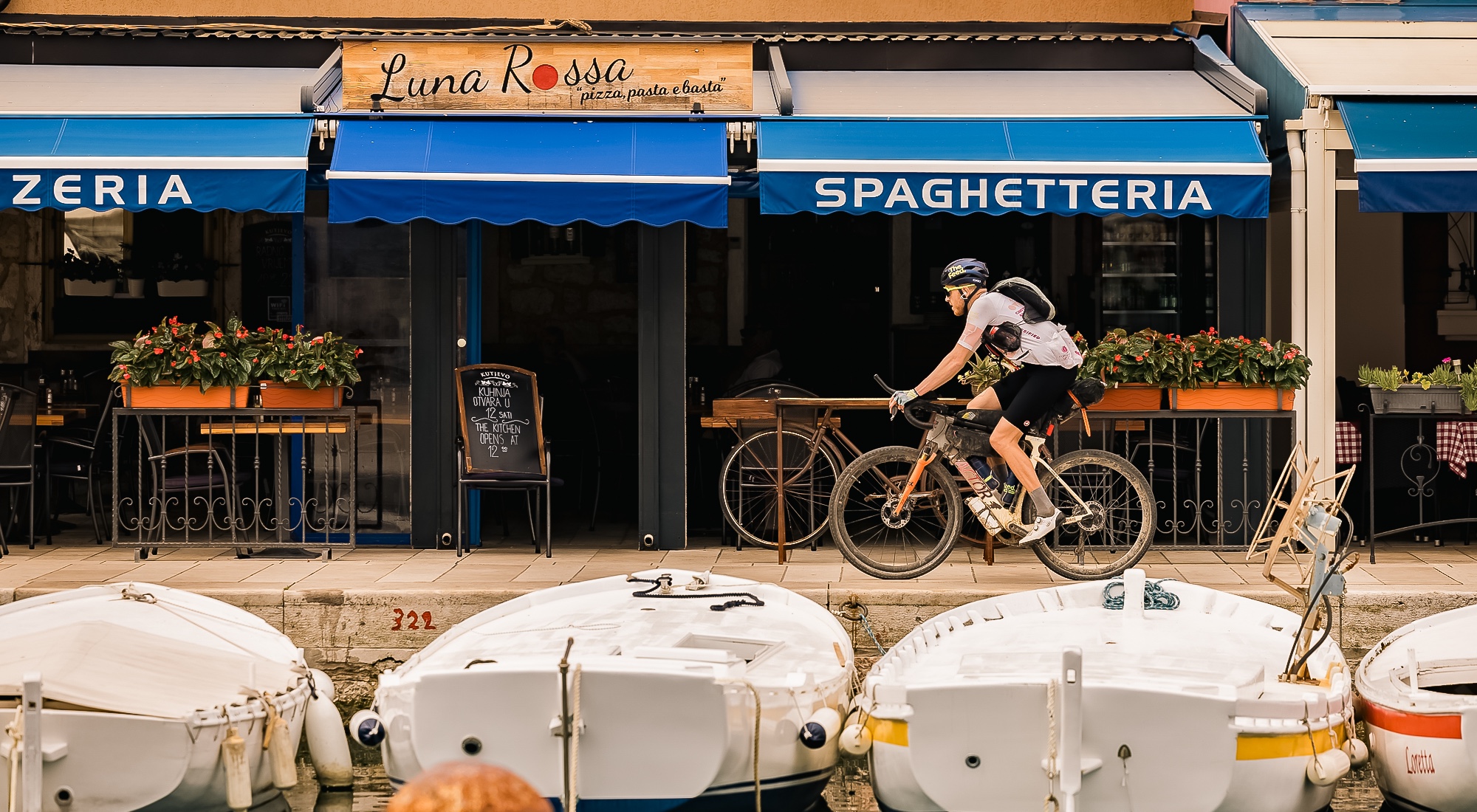
“Anyways, it was getting dark, and it was cool, you could see the crest of where I needed to get to from there, and I could see it was mostly downhill, sweet, so I started moving water around, filling bottles, adding electrolytes to my bottle, then I thought ‘oh, don’t forget the selfie,’ and then I started descending. And it was a sketchy descent, all loose gravel and stuff. I was probably about halfway down when I realized I had forgotten my bottle at the top. And I actually stopped and sat for a minute debating whether I really needed that water. Yeah, shit, better climb back up for it, which I did. But then going back down it was totally dark and really sketchy. Pretty good-sized boulders. That was a funny memory.”
Just a problem that needs to be solved
Dealing with peanut-butter mud on the final day proved to be another hilarious memory.
“It had gone from gravel roads to a pasture, and it had been raining lightly all morning. The mud was just turning to clay. I had been riding through two nights. Now it’s not quite dawn, it was still dark. And then my tires just seized up with all the clay mud. It went from like, ‘yeah, no worries, I have 200km on the next guy,’ to having to walk and basically coming to a standstill,” Rob explained.
“You start walking but you’re walking through wet concrete and your feet are getting bigger and bigger, and you can’t even roll the bike along anymore, so you have to carry it, but the mud makes it weigh like 100 pounds. There is so much mud, and it doesn’t fall off. I looked at my map wondering how far this is. And it was only around 1.5km, which doesn’t seem that long, but it’s a super long way to carry a bike that has taken on all this extra weight, and your feet weigh about 15 pounds each with the mud.”
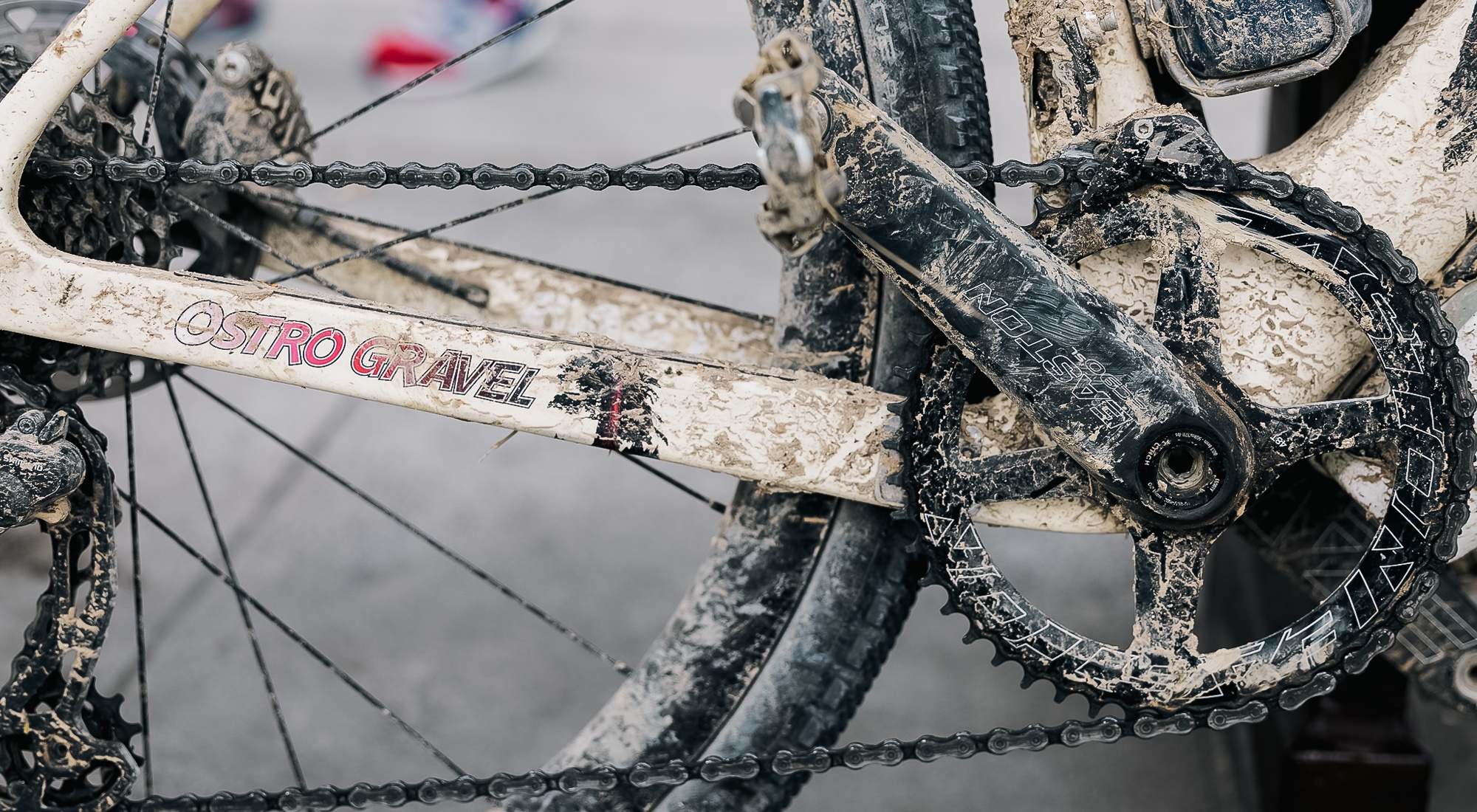
With no standing water to help wash off his bike, Rob simply had to scrape as much mud off as possible and wipe his feet off in wet grass, until he could wash more off in water. “I just had to start peeling it off with my hands. Just to get it to the point that you can actually carry the bike. I bet it took me about an hour to get one kilometer. At this point in the race, your brain just doesn’t comprehend.”
A successful season
Having retired from road racing at the end of 2021, Rob now has three full years racing as a gravel professional under his belt. By any standard, 2024 has been a successful year for the rider from British Columbia. “The season in general was quite successful. I never start a year with pen and paper and write down ‘I want to win this; I want to win that’…I just want to execute at every race,” he explained. “I had podiums probably at 70% of the races I did. I took an unexpected 6th place in the Gravel Earth Series thanks to 2nd place at Traka 360 in Spain. So, there were a lot of good results and just a few strikeouts.”

Photo credit: Stirl and Rae Media Haus
With victories at Seven Serpents and Shasta Gravel Hugger, a 2nd place at Traka 360 and a strong performance at the 1,050 km-long Trans Cordilleras in Colombia, Rob seems to be carving himself a niche as a top-flight ultra-endurance gravel racer. But how many can he do of these in a year? “Starting in 2023, I did an ultra-event in July, August, November, then I did Trans Cordilleras in Colombia in Feb, then Traka 360 and then Seven Serpents in May. So, I did six in 10 months. That was too many. Now I need to find that sweet spot of two or three a year,” he said. “There are not a ton of races anymore that I want to do multiple times. Especially these long ones, you only have so many of those in your matchbook and if I can only do two or three of these a year, I’d like to do new ones each time.”
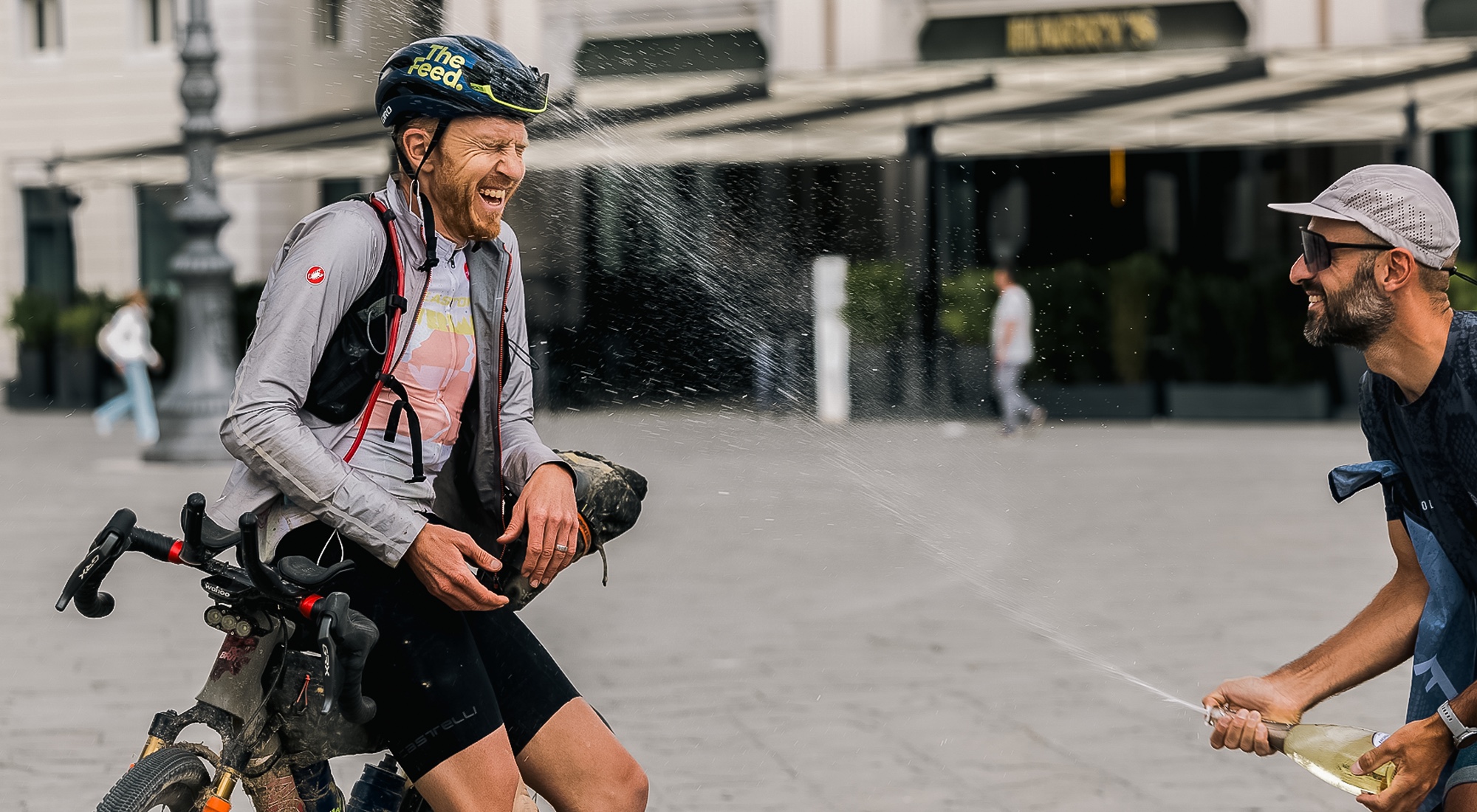
Photo credit: Stirl and Rae Media Haus
Baseline for operation is just to go faster
There’s no question that Rob just loves to ride his bike, which makes the thought of sitting on it basically for 53-hours straight bearable. But is there something special about his training methods or mentality to give him the edge in these extreme events? “I think it is probably that I am just early to the table. I think if you saw other former pros doing these things, you would see a lot more competition,” he suggested. But then again, doing these types of rides takes a special mindset, and a willingness to be self-sufficient from the ground up. That’s a huge change coming from a pro road team where just about everything is done for you; all a road pro has to do is ride the bike.
However, most gravel privateers are responsible for doing everything from booking flights to cleaning and maintaining bikes. They are also executing these tasks alone in a hotel room, not grouped together on a team bus. The shock of solitude can be harder than the racing for some. “I am fully self-supported, and it sucks sometimes. You beg, borrow and beg some more sometimes to get some help,” Rob said. “My first year doing this, I was totally alone, I didn’t know many people, and I really had to do everything for myself. You go from the most team-oriented feeling with a pro team and everyone on a bus, to having no one. It makes it hard.”
Now that Rob has been on the privateer circuit for three seasons, he has built up a reputation and has a nebulous support system around him. “Factor was great this year, their presence helped a lot. They were there for me in the feed zone at Unbound, were there for moral support at SBT. It helps a lot,” he explained. “There are so many moving pieces to getting yourself organized for a race that, at this point, I think I would make a pretty good team manager.”
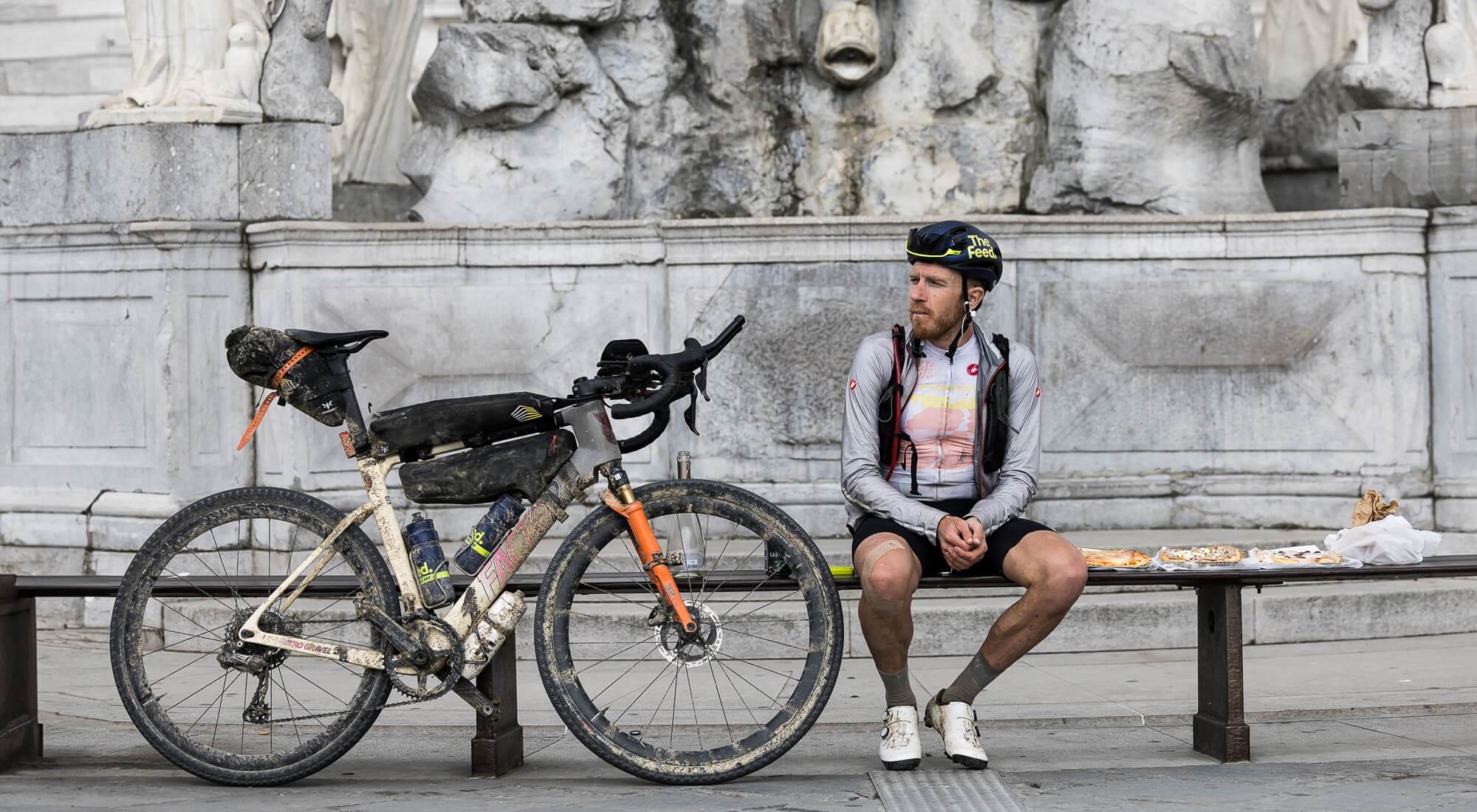
What was Rob riding?
Seven Serpents isn’t your typical ultra-gravel race. In fact, it’s not really a gravel race at all. Since some of the tracks that are used for the course probably are more intended for goats than bikes, mountain bikes are generally used instead of gravel.
And indeed, Rob chose an interesting setup for his Seven Serpents-winning ride. By combining his OSTRO Gravel with a gravel-specific 40mm Fox Racing suspension fork, he was able to negotiate the rough descents with confidence, even at night. “The Seven Serpents event is usually recommended for a mountain bike but honestly the OSTRO Gravel is so capable when I have the suspension fork on it, there’s very little I can’t do,” Rob said.
For wheels, he had on a pair of the Easton EC 90 ALX gravel wheelset with a mid depth of 36 mm for an aero advantage over the course of 50+ hours on the bike. The 24 mm internal rim width also facilitates running the Schwalbe Overland tires 50 mm wide in front and 45 mm in the rear. “Next to the IRS this is by far my favourite tire in the lineup. It rolls incredibly fast, is puncture resistant, and the aggressive and consistent shoulder knobs kept the bike upright even while making some questionable line choices in the dark!”
Though more and more gravel riders are turning to Classified, Rob was an early adopter of the Classified Power Shift Hub. Having the ability to run a 1x setup with an effective 2x gear option provides the best of both worlds. It means that his 50-front chainring can function like a virtual 34-tooth front chainring, which when paired with the 11-34 cassette provides a 1-1 for the easiest gear ratio. It’s a setup that would come in handy both on the 20% gravel climbs as well as during those sections of the race where Rob was hustling to make the ferry.
Model | OSTRO Gravel by Factor Bikes, Rob Britton's Custom Paint Design |
Groupset | Shimano 11s GRX Di2, 11-34 cassette with a 50 (virtual 34) |
Fork | 40mm Fox taper cast 32. Fork |
Wheels | Easton EC 90 ALX, Classified Power Shift Hub (effectively riding a 1-1 easy gear) |
Tires | Schwalbe Overland tires, 50 front/ 45 rear |
Special Equipment | Apidura racing series bags and hydration vest, Gloworm lights |

Follow Rob Britton to stay updated with his latest news and insights.

Learn more about OSTRO Gravel

© 2025 Factor Bikes. All rights reserved / Privacy Policy |Terms
